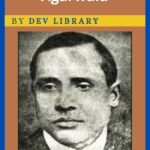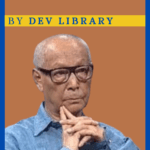During the Late 19th century, For the passage of Assamese language literature and to establish modern Assamese literature, people who had done lots of efforts, one of them was Padmanath Gohain Baruah. Multifaceted talented Padmanath Gohain Baruah is a poet, novelist, playwright, biographer, humorist, essayist, editor, historian, religious book-maker, and textbook maker. Despite being educated in Bengali medium, he was trying to fulfill the interests of Assamese readers with different tastes like poetry, drama, comedy, novels, biographies, etc., by working hard and patiently to make up for the lack of Assamese language literature by spreading literature in his mother tongue.

Biography of Padmanath Gohain Baruah
| Name | Padmanath Gohain Baruah |
| Date of Birth | 24 November, 1871 |
| Place of Birth | Nakari Village, North Lakhimpur |
| Father | Ghinaram Gohain Baruah |
| Mother | Lambidevi |
| Spouse | Lilawati, Hirawati |
| Education | 1/ North Lakhimpur Primary School 2/ Sivasagar Government High English School 3/ Ripon College, Kolkata |
| Awards | Title of Raibahadur |
| Death | 7 April, 1946 |
Early Life
Padmanath Gohain Baruah was born on 29th November 1871 in Nakari village of North Lakhimpur. His father’s name was Ghinaram Gohain Baruah and his mother’s name was Lambidevi. Thaumoong Klinglunmong Budhagohain was the ancestor of Padmanath Gohain Baruah.
Padmanath Gohain Baruah, who started his education career in 1879 at the Primary School in North Lakhimpur, enrolled in the Sivasagar Government High English School in 1884. Gohain Baruah later enrolled in Ripon College in Kolkata in 1890 for higher education, and from Ripon College, he cleared the F.An exam.
Also Read: Biography of Rabindranath Thakur (Tagore)
Professional Life
After returning to Assam from Kolkata, he took over as headmaster at Kohima Middle English School. He married Lilawati while working as a teacher at Kohima Middle English School. Unfortunately, Lilavati has embraced untimely death because of which he marries another woman named Hirawati for the second time.
He later served as a teacher at Tezpur Normal School, Tezpur Government High School, Jorhat Government High School, etc. He also served in Tezpur for a few days as a temporary tehsildar/The Officer in Charge of the collection of revenue, etc. Importantly, he also served as a first-class honourary magistrate in Tezpur Court.
Literary Life
Padmanath Gohain Baruah, who has been doing literature since his schooling, has been a source of interest in his mind since his studies in Calcutta. He regularly practiced literature in ‘The Jonaki magazine’ published in 1889 as the mouthpiece of the Assamese Language Improvement Sadhini Sabha, formed in the sincere efforts of Assamese students living in Kolkata. The inauguration of Jonaki magazine and his literary work subsequently increased his passion for literature.
Birth of ‘Bijuli’
But what is important is that the issue, of Jonaki magazine was published as the mouthpiece of ‘Assamese Language Improvement Sadhini Sabha’. The issue of the Jonaki magazine was created by the Babiya along with Padmanath Gohain Baruah and many others. In 1890, people like Padmanath Gohain Baruah, Benudhar Rajkhowa, Krishnaprasad Duarah, and Neelkantha Baruah hone/get together and published a magazine called ‘Bijuli’. Krishnaprasad Duarah took over as the editor of Bijuli’s first year. Padmanath Gohain Baruah on the contrary took over as editor in the second year.
‘Banti’ Magazine
Importantly, the publication of ‘Bijuli magazine’ stopped in 1890. This was followed by Assam ‘Banti’ magazine in 1901 under the edit of Mathura Mohan Baruah. Gohain Baruah also served as the editor of this magazine. Gohain Baruah also served as an editor of the third Assamese magazine ‘Usha’ published from Tezpur in 1907.
Poem’s
Padmanath Gohain Baruah, who edited the magazine with perfect and art agreeable, jointly wrote/composed a poem book called ‘Padmapani’ with Panindra Nath Gogoi while he was pursuing education in school. He later wrote and published a poetry book called ‘Leela Kavya’ in 1899. Importantly, this poetry book is written by remembering his first wife Lilawati after her death. Gohain Baruah’s two other published poetry books are ‘Jurani’ published in 1901 and ‘Phool Saneki’ published in 1941.
Plays
Apart from poetry he also played an important role in making Assamese theatre stores. Gohain Baruah composed a total of 8 plays. His plays can be divided into different parts as per the story narrative. The funny or comedy plays he wrote are- ‘Gaonbudha’ (1897), ‘Teton Tamuli’ (1909), and ‘Bhut Ne Bhram’ (1915). His historic or historical plays are- ‘Jayamati’ (1900), ‘Gadadhar’ (1907), ‘Sadhani’ (1911), and ‘Lachit Barphukan’ (1915). The only mythological play he wrote was ‘Banaraja’ (1932).
Gohain Baruah’s ‘Jayamati’ play has been termed by critics as the best play for its skill in creating a silent humor, a perfect way of creating type characters, for designing the perfect environment of a normal rural lifestyle. ‘The Taton Tamuli’ play on the other hand is the best demonstration of khuhutiya/Comedy drama. Importantly, a stage successful play in the backdrop of the late 19th and early 20th century is ‘Taton Tamuli’. Padmanath Gohain Baruah’s plays, written using the so-called rural language of the simple and charming common Assamese people, occupy a special place in the history of Assamese drama literature.
Novel
Padmanath Gohain Baruah actually opened the door to Assamese novel literature by writing ‘Bhanumati’, the first Assamese novel rich in novel features. The novel ‘Bhanumati’ was published in the first issue of the first year of ‘Bijuli’ magazine published in 1890. The novel ‘Bhanumati’ was published in book form in 1908. The second novel written by Padmanath Gohani Baruah is ‘Lahari’. The novel ‘Lahari’ was published by the author in 1892. Importantly, this is the first Assamese novel to be printed as a book.
History Book
Padmanath Gohain Baruah, who is interested in the study of archaeology, systematically wrote a history book called “Assam History” about the various events of old Assam in 1899.
Religious texts
In addition, Padmanath Gohain Baruah wrote two religious books, Sri Krishna (1930) and Shrimadbhagawat Gita’s Aalmat Gitahar (1935).
Other books
In addition, Gohain Baruah wrote books like Niti Siksha, Aadi Siksha, Maharani, Assam History, Hindu History, Sahitya Sansthan (1890), Jibani Sangraha/Biography Collection (1915), Buranjibudh/History, Bhugul/Geography Darpan, Desi Kasrat, Shiksha Vidhi, etc., to help the students. Among them is the book ‘Biography Collection’ published in 1915, which is the first biography of the modern Assamese language. This book contains biographies of many people of that time. Apart from this, Padmanath Gohain Baruah’s autobiography is called ‘Mur Huwarani’ published in 1972.
As a Server
Importantly, in the proposal of Fanidhar Chalihadeva and in support of Haresh Chandra Rajkhowa and Deveshwar Chalihadeva Padmanath Gohain Baruah in 1917 in the field of ‘Assamese language literature’ and culture in Sivasagar decorated the post of president of the first session of the Assam Sahitya Sabha which played an important role. He also served as an editor-in-chief under the chairmanship of Chandradhar Baruah in the second session of the Assam Sahitya Sabha held in Goalpara in 1918. Padmanath Gohain Baruah also served as the president of the third annual session of the Assam Students’ Conference held in Dibrugarh in 1918. Importantly, Padmanath Gohain Baruah is the first Assamese recipient of the ‘Rai bahadur’ title conferred by the British.
Padmanath Gohain Baruah was the first literary pensioner in Assam, and Padmanath Gohain, the first president of the Assam Sahitya Sabha, was not only confined to literary practices but was also involved in various public activities besides conducting literary practices. He was the founding editor of the traditional Ban/Arrow Theatre in Tezpur, The first Assamese mayor of Tezpur municipality, The first president of the governing body of the traditional Darang College, One of the founders of Tezpur Social Event of Assamese Club. Apart from this, he was also associated with various institutions like Assam Management Meeting’, ‘Assam Rayat Sabha’, ‘All Assam Teachers’ Conference’, ‘Ahom Sabha’, ‘Assam Mandal Kanango Sanmelani/Enclosure of Mandal Law’, ‘Jayamati Utsav/Festival Samiti’, etc.
Conclusion
Padmanath Gohain Baruah, the helmsman of several literature who tried his best to strengthen the foundation of Assamese language literature, died on April 7, 1946. Padmanath Gohain Baruah who is associated with Assam Sahitya Sabha, Assam Students’ Conference, Enclosure of Mandal Law, Assam Association, and Assam Sanrakshani Sabha will forever be worshipped by the Assam and the Assamese. Padmanath Gohain Baruah’s ideology needs to be imitated and followed by every youth of Assam.
FAQ
1. When and where was Padmanath Gohain Baruah born?
Ans: He was born on 24th November 1871 at Nakari village, North Lakhimpur, Assam.
2. Name the first Assamese novel written by him.
Ans: ‘Bhanumati’ is the first Assamese novel written by him and published in 1890.
3. Who was the first president of Assam Sahitya Sabha?
Ans: Padmanath Gohain Baruah was the first president of Assam Sahitya Sabha.
4. When was the first Assam Sahitya Sabha held and where?
Ans: The first Assam Sahitya Sabha was held at Sibsagar in 1917.
5. Name some of his notable works.
Ans: Some of his notable works are- ‘Bhanumati’, ‘Bijuli’, ‘Banti Magazine’, ‘Lahari’ etc.
6. Who was the first literary pensioner of Assam?
Ans: Padmanath Gohain Baruah was the first literary pensioner in Assam.
7. Who was the first Assamese to be conferred with the title ‘Rai bahadur‘?
Ans: Padmanath Gohain Baruah is the first Assamese recipient of the ‘Rai bahadur’ title conferred by the British.
8. What is the name of the autobiography of Padmanath Gohain Baruah?
Ana: Gohain Baruah’s autobiography is called ‘Mur Huwarani’ published in 1972.
9. When did Padmanath Gohain Baruah die?
Ans: He died on 7th April 1946.

Hi, I’m Dev Kirtonia, Founder & CEO of Dev Library. A website that provides all SCERT, NCERT 3 to 12, and BA, B.com, B.Sc, and Computer Science with Post Graduate Notes & Suggestions, Novel, eBooks, Biography, Quotes, Study Materials, and more.








